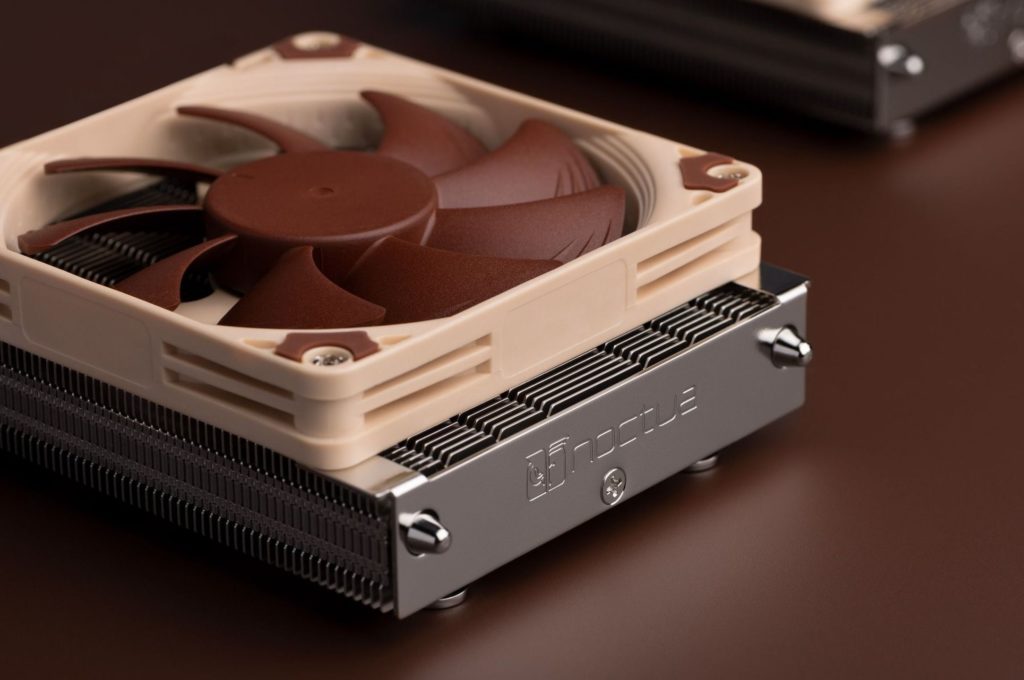Noctua NH-L9a-AM5
Many small coolers designed for SFF systems that are compatible with the AMD AM4 platform can’t be mounted on AM5. The NH-L9a(-AM4) top-flow cooler also made the list, and Noctua had to modify its mounting system. The implementation is quite clever, the work is already done and the old-new coolers, whose design is basically unchanged, go on sale. We also have information on which processors they support and under what circumstances.
AMD AM5 motherboards have the same mounting holes as older AM4 motherboards, even no different screws are required, but still some of the coolers are incompatible. These are those models that do not expect a non-removable backplate behind the CPU socket. AM5 boards (compared to AM4 boards) have these extra. Because of this, the NH-L9a(-AM4) cooler also lost compatibility and had to be adapted a bit. But really only a little.
The design of the NH-L9a-AM5 heatsink is identical to that of the NH-L9a and NH-L9a-AM4. That is, it is still 37 mm in height including the fan, 92 mm in width (towards the memory modules) and the dominant one (with 114 mm) is the depth. The weight of the heatsink is also the same, to the gram, as with the NH-L9a(-AM4) – 390 grams. The fan is additional 75 grams (465 grams in total). The fan used is again a 90mm NF-A9x14 HS-PWM fan with a 14mm profile and a maximum speed of 2500 rpm.
With the NA-RC7 Low Noise Adapter, it can be limited to approximately 1800 rpm. The minimum speed is quoted at 600 rpm. To increase cooling performance (by more efficiently guiding and laminarizing the air streams at the intake, in front of the fan) Noctua emphasizes the possibility of using the NA-FD1 tunnel with this cooler. The latter is installed between the cooler fan and the vent in the side panel of the case.
The cooler is now mounted to the CPU socket through holes in the backplate, which the AM5 boards have fixed to the PCB. In the corners of this backplate there are holes through which the screws will pass through to the brackets of the cooler itself. The mounting system is very similar in its essence to that of the older variant (on older AMD motherboards). The difference is that before installation, the backplate doesn’t have to be removed (as it was necessary, for example, on the AM4 platform), which is not even technically possible, and everything is adapted so that it doesn’t interfere with anything.
If you already own an older NH-L9a(-AM4) cooler, all you need for AM5 platform support is a new bracket and screw kit (NM-AM5-L9aL9i), which Noctua will send you for free upon request via a traditional form.
For the NH-L9a-AM5, Noctua already has a complete list of supported processors with typical notes. The Ryzen 5 7600, Ryzen 7 7700, and Ryzen 9 7900 processors with a TDP of 65W and even the Ryzen 5 7600X with a TDP of 105W (and a PPT of 142W) are 100 % compatible. But be warned, the criteria for “full” compatibility means that there will be enough cooling power that the cores in the all-core boost won’t run at a lower clock speed than the “base” clock speed. With more powerful coolers, the clock speeds, and hand in hand with them the performance, will naturally be higher when the processors are under maximum load. And lower single-core boost clock speeds will also be achieved, which also depend on the temperature, which will naturally be higher with such small coolers.
And then there’s the list of unsupported processors (R7 7700X, R9 7900X, R9 7950X, …), including the still-unreleased models with 3D V-Cache (R7 7800X3D, R9 7900X3D, and R9 7950X3D), for which the NH-L9a-AM5’s cooling performance is inadequate to achieve base clock speeds. Operation with them will be possible, but after a significant reduction of the power limit (in UEFI or via the Ryzen Master application), which will be tied to lower core clock speeds than AMD states in the specifications of these processors.
Noctua NH-L9a-AM5 coolers are available both in the traditional brown-beige (for the suggested price of 50 EUR) scheme as well as in the chromax.black variant, which is 10 EUR more expensive.
English translation and edit by Jozef Dudáš
- Contents
- Noctua NH-L9a-AM5
